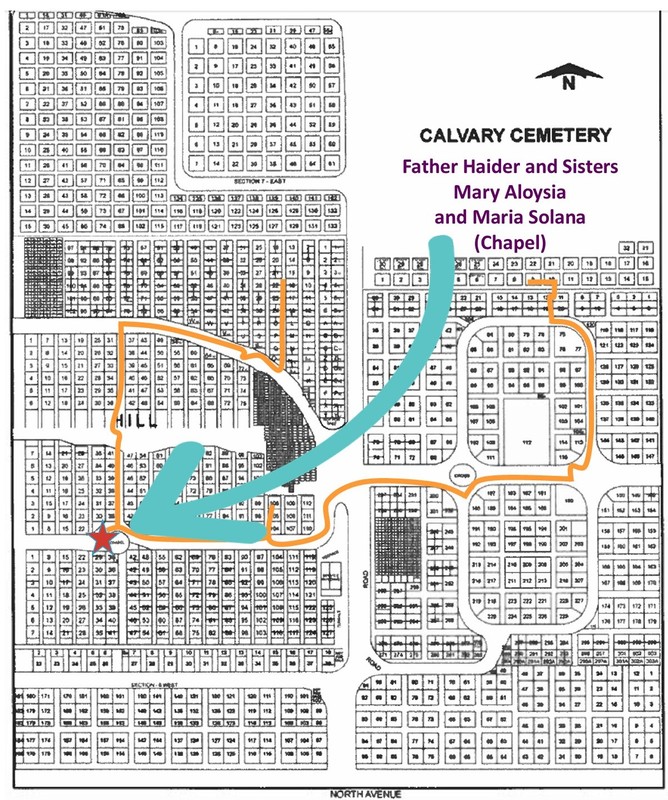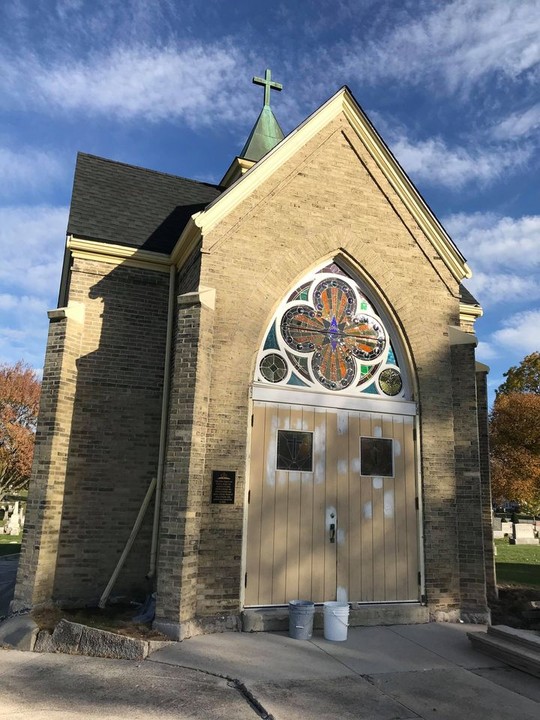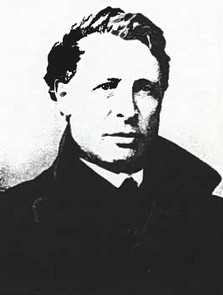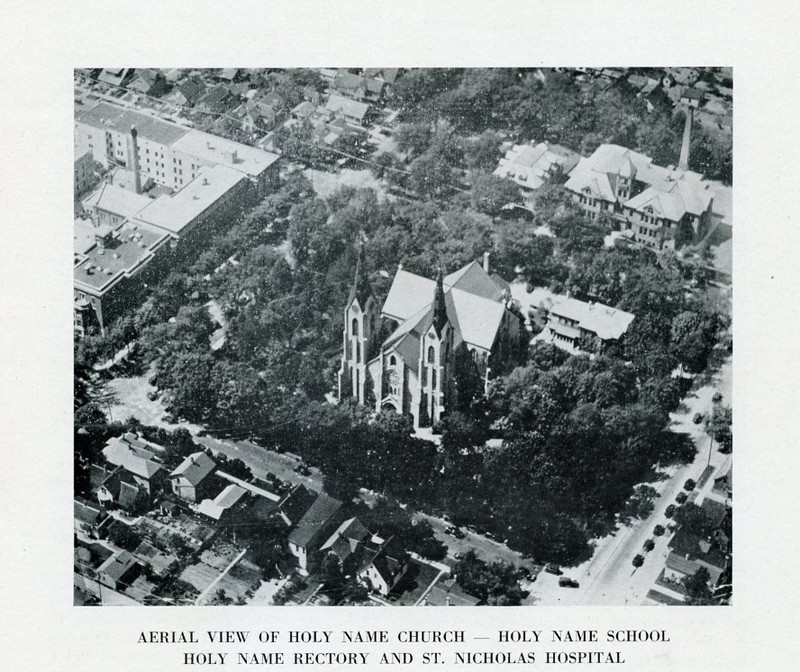Father Michael Haider and the School Sisters of Notre Dame
Introduction
Text-to-speech Audio
Father Michael Haider was born and ordained in Austria before moving to the United States. He swiftly became involved with St. Mary Magdalene parish, now Holy Name Catholic Church. Father Haider was involved in building the new, beautiful church. The two women also buried at this chapel were School Sisters of Notre Dame, involved in education through the church. There is little known about them beyond their names and their involvement with teaching.
Images
Location of Chapel

Chapel where Father Haider and the Sisters are buried

Father Michael Haider

Holy Name Church

Backstory and Context
Text-to-speech Audio
This chapel was built to honor the memory of Father Michael Haider who served Holy Name Church for 22 years. It also includes two School Sisters of Notre Dame who served with him.
Father Haider was born approximately October 8, 1820 in Absem Tyrol, Austria and was ordained in Brixon Tyrol in 1845. A few years after being ordained, he became an army chaplain during the Austrian Revolution of 1848. When the war ended, Father Haider came to America in 1850 and served as pastor to parishes in the Diocese of Milwaukee. Then in 1857 he was appointed the first ever resident pastor of Holy Redeemer Church in Madison.
In 1862, Father Haider arrived in Sheboygan at what was then known as St. Mary Magdalene parish, now Holy Name Catholic Church. He became the 7th leader at the church and quickly saw that there was a need for a larger facility. A man of action, he bought an entire block of land across from the rectory, south of Superior Avenue and 8th Street.
He had a deep love for European architecture and wanted to build a Gothic style church that would be surrounded by nature and built to last for centuries. There was not a lot of funding available to build such a grand building though.
A man named Jacob Jung stepped in to help, and offered to purchase the Pigeon River Limestone Quarry and turn it over to the church for building materials. He paid $50 for it, and the church later reimbursed him when they sold the quarry for profit. This provided all of the stone needed to build the beautiful church that still stands today.
Father Haider drew up the plans himself, and supervised all of the construction which started in 1867. He was so involved in the details that he even handpicked which trees to use for the superstructure supporting the roof.
At first, he found strong opposition from the congregation, so much so, that he had to find financial backing from a non-Catholic! When the construction began, there was little help, but as soon as he proved his dedication to the project and the congregation, support began to grow. The cornerstone of the building was laid on June 21, 1868, and the building was completed in 1871. The church was dedicated November 10, 1872 as Holy Name of Jesus, which is what it is still known as today.
The steeples of the church reach 170 feet in height, and sailors on Lake Michigan used them as a landmark when they navigated to the port of Sheboygan. Father Haider always dreamed of hearing bells chime from the towers of Holy Name. He lived to see his dream come true when they were installed and rang out for the first time in December 1883.
Father Haider passed away February 19, 1885. Known as a hardworking and talented man, he befriended all those around him and was beloved by the parishioners and those who knew and worked with him. His death was mourned by the city, and a few months after his burial in Calvary Cemetery, his parishioners erected this chapel over his body in memory of the great work he had done for them. It has been deemed a landmark project and will be restored when funding becomes available.
Sister Mary Aloysia, her given name being Frances Grossmann, and the Venerable Maria Solana were both School Sisters of Notre Dame. The School Sisters of Notre Dame were some of the first religious women from Germany to begin teaching in America.
In 1859, just before Father Haider’s arrival, the St. Mary Magdalene Educational Mission was established and the work of the sisters led to the Seton Catholic School that continues today.
Although there is not much information known about them, it is clear that they had enough of a significant impact to have such beautiful stone markers and to be buried near Father Michael Haider in the chapel. Sister Solana served as a principle and superior at the school, and was given the title of “Venerable” after her death, which means “heroic in virtue.” A German script has been left with Sister Aloysia which describes her beauty and virtue, and her work in advancing education at the school.
Sources
Klein, Gary C. Haider Chapel at Calvary Cemetery was built atop the remains of Holy Name's first priest, Sheboygan Press. August 11th, 2022. Accessed October 27th, 2023. https://www.sheboyganpress.com/story/news/2022/08/11/sheboygan-history-haider-chapel-built-honor-rev-haider/10283357002/.
Parish Timeline, Sheboygan North Catholic Parishes. Accessed October 27th, 2023. https://www.sheboygannorthcatholicparishes.org/parish-timeline.
Holy Name Church: Centennial Anniversary. Sheboygan, Wisconsin. 1945.
